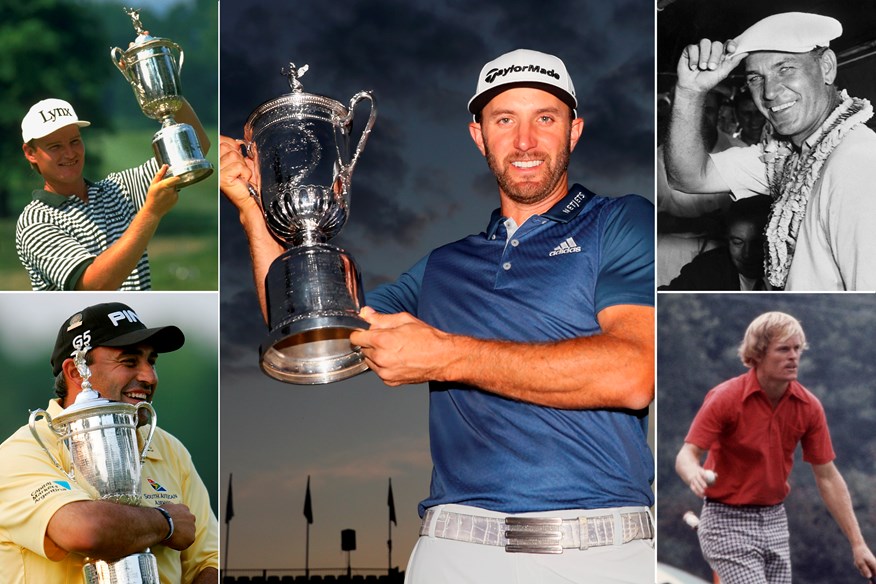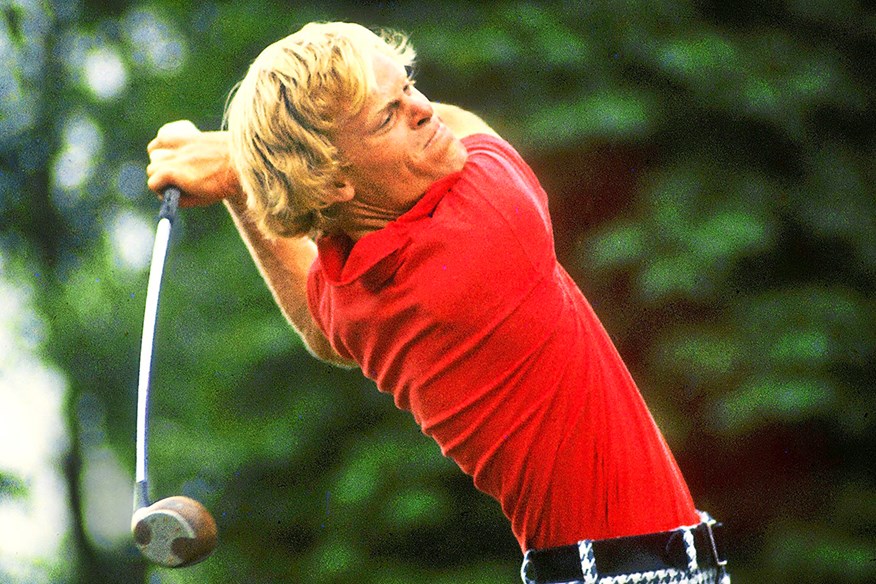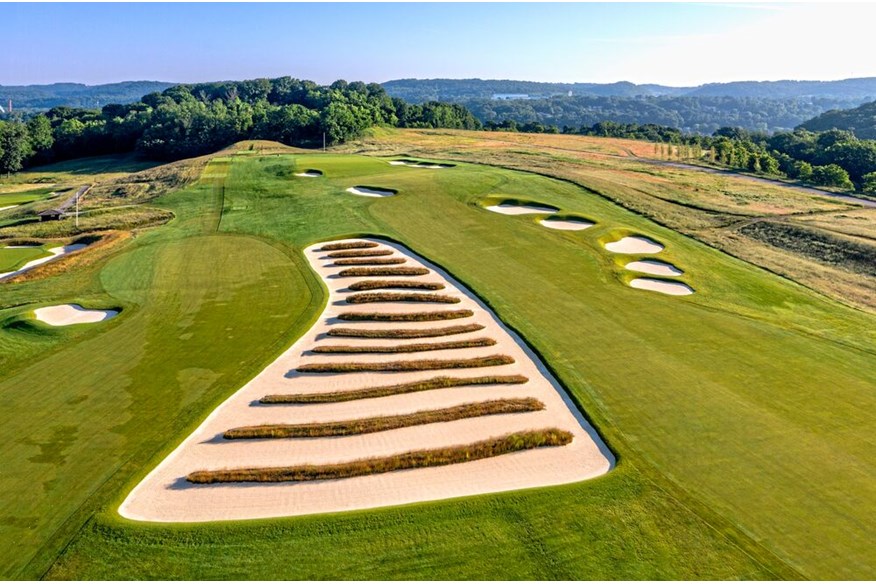Get ready for carnage! What the nine previous Oakmont US Opens tell us about this week
Last updated:

What the nine previous US Opens at Oakmont tell us about the 2025 major.
Oakmont welcomes the US Open for the 10th time with the promise of a brutal set-up facing the players. But has that been the case on the previous nine occasions?
If there’s one course that truly embodies the brutal soul of the US Open, it’s Oakmont. This isn’t your friendly PGA Tour setup where birdies are the norm, or even one of the other majors where an under-par winning score is standard. This is survival golf, wrapped in lightning-fast greens and fairways like concrete runways flanked by walls of thick, tall, gnarly grass.
It isn’t long on water hazards or dramatic elevation. It doesn’t need gimmicks. What it offers instead is something far scarier: pure, unrelenting difficulty.

The first US Open held at Oakmont in 1927 set the tone for nearly a century of punishment. Tommy Armour was the man who survived – yes, survived – the week, posting a total of 301. That’s 13-over par, and it required a playoff to separate him from Harry Cooper. Armour’s gritty win, made possible with steel nerves and a hot putter, gave early notice: Oakmont is no place for the faint-hearted.
- The 5 most brutal championships in US Open history
- The holes where the US Open will be won and lost
- How long?! Why this is the craziest par-3 in major history?
In 1935, Sam Parks Jr. stunned the field and the press with another high score—299, seven-over – winning by two shots. Parks was a local lad with intimate knowledge of the course, and that edge proved crucial on Oakmont’s glassy greens. The USGA was just warming up.
The 1953 edition saw Ben Hogan at his peerless best. Hogan’s 283 total (one-under) was good enough to win by six and complete the third leg of his triple-major season – still one of the greatest ever. He described Oakmont’s greens as “more like ice than grass,” and that was in the ‘50s.
In 1962, a young Jack Nicklaus faced off against Arnold Palmer – on Palmer’s home turf, no less. The crowd was electric, but Jack was unflappable, defeating Arnie in an 18-hole playoff at just 22 years old. It was his first professional win, and the start of one of the most dominant careers the game has ever seen. But when the Golden Bear is winning on one-under, you know it’s tough.
US Open at Oakmont in numbers
Cumulative winning score +4
Highest winning score +13
Lowest winning score -5
Average winning score +0.56
Fast forward to 1973, and Oakmont witnessed perhaps the most iconic single round in US Open history. Johnny Miller’s Sunday 63 still echoes through the game. He hit all 18 greens and took only 29 putts – a masterclass in precision that hasn’t been replicated since. But even that round came after a rain-softened Saturday gave players a sliver of mercy. Conditions like that are rare at Oakmont.

Larry Nelson came through in 1983, edging out Tom Watson with a score of 280 – four-under par. It was an impressive performance, but even Nelson admitted it took nerves of steel and one of the best ball-striking weeks of his life to manage it. Few get through Oakmont without at least one round that feels like a white-knuckle ride.
In 1994, Ernie Els triumphed in a three-way playoff at five-under, beating Loren Roberts and Colin Montgomerie. At just 24 years old, Els held his nerve through a Monday playoff and kickstarted what would become a Hall of Fame career. That year was the anomaly – the course had been softened and the scoring showed it.
By 2007 the pendulum had swung brutally back. Ángel Cabrera’s winning total? Five-over. That year, Oakmont’s rough was knee high and the greens were running at 14 or 15 on the Stimpmeter. That’s not a putting surface – it’s a glass tabletop. Players weren’t reading putts; they were praying over them. “Definitely the hardest course I’ve ever played,” said the last man standing.
Then came Dustin Johnson in 2016, shrugging off a bizarre rules controversy to post four-under. That score sounds tame until you remember: the week was hit by weather delays, the course was soft, oh, and DJ hit more greens in regulation that week than anyone else. At Oakmont, that’s like threading a needle in a hurricane. Despite the win, DJ echoes Cabrera’s view that it’s the toughest place he plays.
So, what can we expect in 2025? The rough is more 2007 than 2016. The course is longer than ever and the greens are slicker than an F1 track. Couple that with the USGA having no desire to see under par win again and your weekend viewing could resemble a horror movie, just without the blood. The weather has ensured a soft start to the week, but with the wet stuff due to dissipate and the sun moving in, things will firm up and the USGA always have a trick or two up their sleeves if things aren’t going their way.
- US Open tee times and groups
- Our betting expert’s Oakmont tips
- Why these are the 20 players who can win the US Open
Ultimately, the magic of Oakmont may be enough to guarantee over par without any assistance. In an era where tech and training have allowed players to overpower many classic venues, Oakmont doesn’t yield. It doesn’t flatter. It simply asks one brutal question: can you control your golf ball perfectly for four days? If not, expect the scoreboard to show it.
Breaking 70 around here is like completing the game. And at Oakmont, the house usually wins.

What the players are saying at Oakmont
Dustin Johnson – champion at Oakmont 2016
“The course is just as hard as I remember, if not harder. You’ve just got to find a way to hit the fairway.
Rory McIlroy – Career Grand Slam winner
“I’m glad we have spotters out there! I birdied the final two holes for 81 (during a visit earlier this month. It didn’t feel like I played that bad.
“It’s much more benign right now than it was that Monday. They had the pins in dicey locations, and greens were running at 15 1/2. It was nearly impossible.”
Jon Rahm – low amateur in 2016 at Oakmont
“It’s just a tough course. It’s so difficult where very few times anybody has won under par. If it doesn’t rain, most likely over par will win again.
“It’s something that none of us, I would say, are used to, but it’s a challenge you need to embrace. If there’s any part of your game that will be tested on a week like this, it will be your mental game, that’s for sure.”
Xander Schauffele – first appearance at Oakmont
“For the most part, the only control you can have is if you keep it right in front of you.
“Anything close to par is what they want here. The members absolutely love their property, and the members absolutely want it to be over par. I know what they’re rooting for.
“My attitude is we’re all playing the same course, and it’s going to be hard. Look at it as a fun challenge versus feeling like you’re living in a nightmare.”
Justin Thomas – T32 in 2016
“You go to a place like this, they don’t need to set it up any differently or trick it up or do anything for it to challenge both the physical and mental part of our game. Oakmont is plenty challenging in both of those aspects. I just think it requires patience and discipline. If you just get lazy, like on any drive, any wedge shot, any chip, any putt, you can kind of look stupid pretty fast, especially at a place like this.”
Every US Open winner at Oakmont
| Year | Winner | Score | Margin of victory | Runner(s)-up | Winner’s prize money |
| 2016 | Dustin Johnson | -4 | 3 strokes | Shane Lowry, Jim Furyk, Scott Piercy | $1,800,000 |
| 2007 | Angel Cabrera | +5 | 1 stroke | Jim Furyk, Tiger Woods | $1,260,000 |
| 1994 | Ernie Els | -5 | Playoff | Colin Montgomerie, Loren Roberts | $320,000 |
| 1983 | Larry Nelson | -4 | 1 stroke | Tom Watson | $72,000 |
| 1973 | Johnny Miller | -5 | 1 stroke | John Schlee | $35,000 |
| 1962 | Jack Nicklaus | -1 | Playoff | Arnold Palmer | $17,500 |
| 1953 | Ben Hogan | -5 | 6 strokes | Sam Snead | $5,000 |
| 1935 | Sam Parks Jnr | +11 | 2 strokes | Jimmy Thomson | $1,000 |
| 1927 | Tommy Armour | +13 | Playoff | Harry Cooper | $500 |
